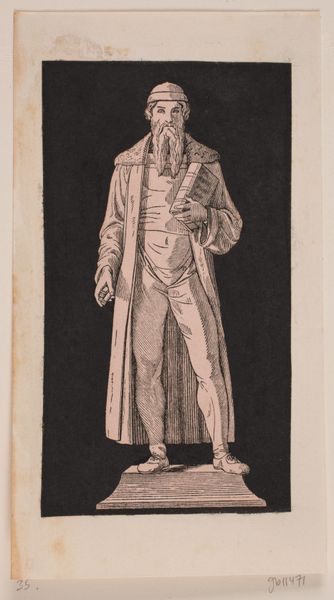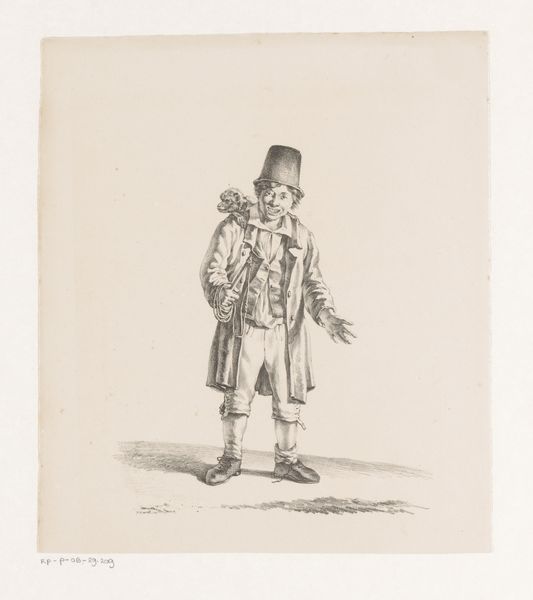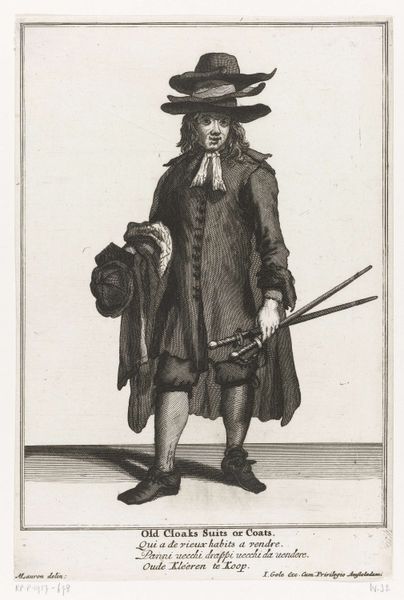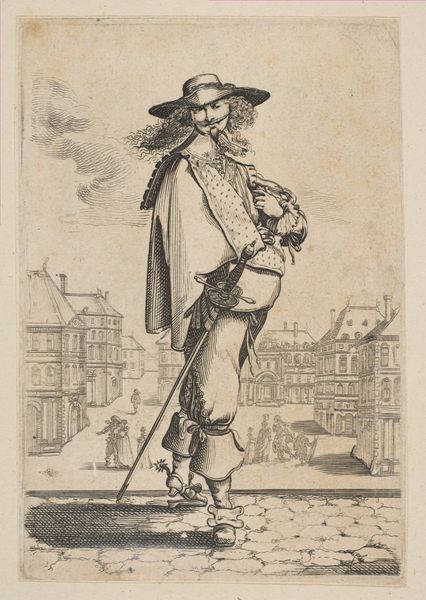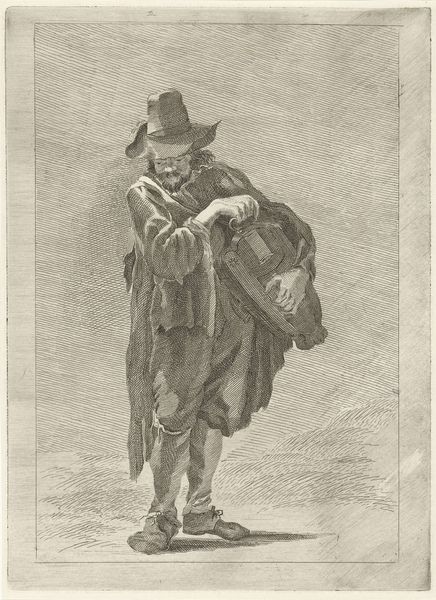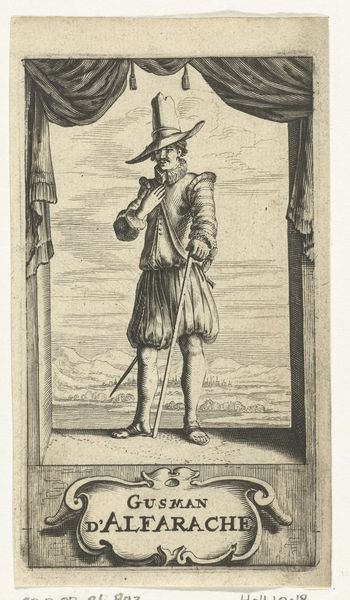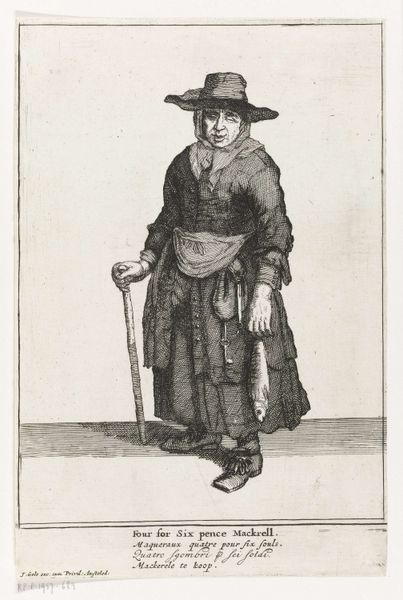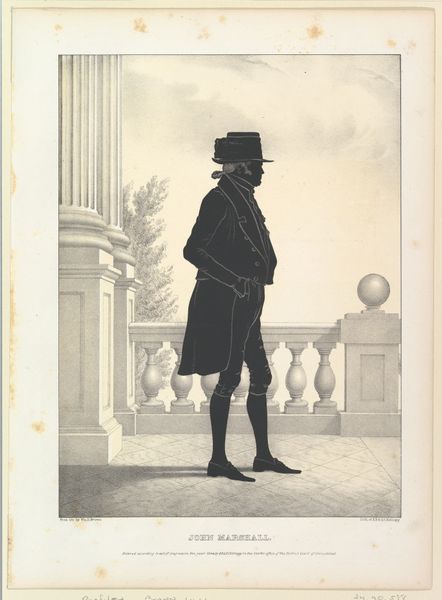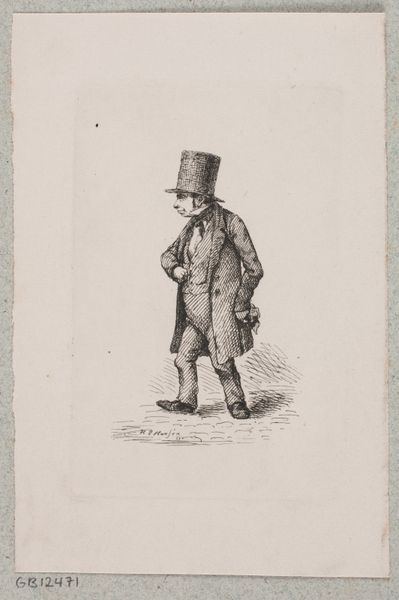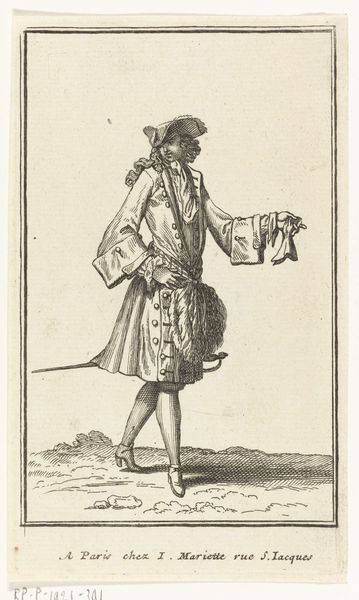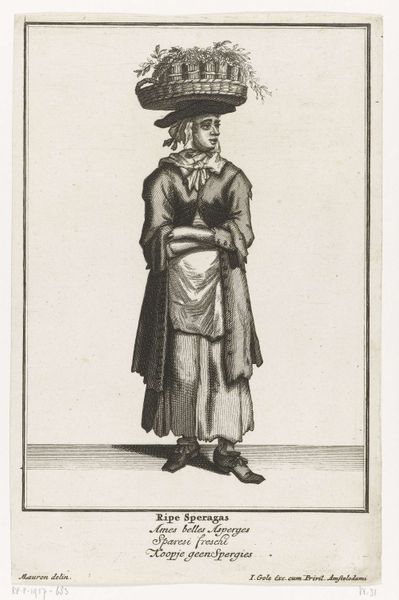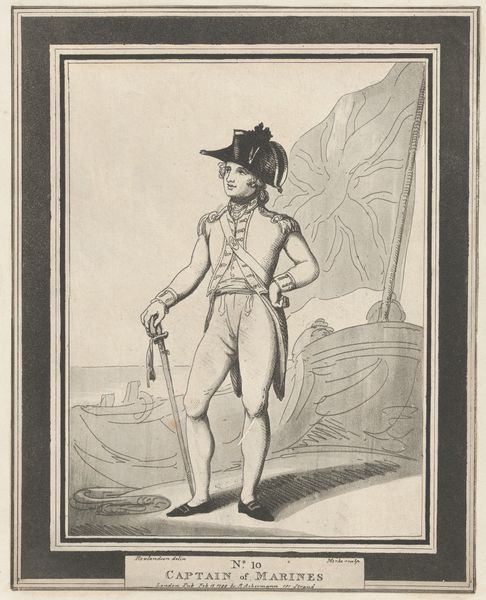
print, engraving
#
portrait
#
baroque
# print
#
old engraving style
#
genre-painting
#
engraving
Dimensions: height 123 mm, width 74 mm
Copyright: Rijks Museum: Open Domain
Editor: Here we have Bernard Picart's "Friese matroos" from 1728, an engraving. It feels like a fashion plate, yet something about the seaman’s exaggerated trousers feels satirical. What stands out to you? Curator: Considering Picart’s process as an engraver, it's critical to view this image within the broader context of print culture. The work was designed for mass production, a commodified image consumed by a growing middle class interested in fashion and social types. How does the engraving's fine detail both elevate and democratize the representation of this “Friese matroos?" Editor: That’s interesting. I hadn’t thought about it as a commodity. How does that change how we see the subject himself? Curator: Well, his clothing becomes less about personal expression and more about labor. The materials - the cloth, the thread, the ink used for its representation, they all speak to specific economies. Who profits from his image? And what kind of labor enabled the creation of this print? Editor: So, we are moving beyond seeing him just as a sailor to considering the systems of production and consumption at play. Does knowing it's an engraving change how you value the artistry? Curator: Absolutely. The artistry lies not only in Picart’s hand but in the entire production line, the material conditions of 18th-century printmaking. From the engraver to the printer and the street vendor who sells the prints. Editor: This has opened my eyes to how much more there is to a seemingly straightforward portrait. Thank you! Curator: Indeed! Examining the materials and processes behind art can unlock entirely new dimensions.
Comments
No comments
Be the first to comment and join the conversation on the ultimate creative platform.

